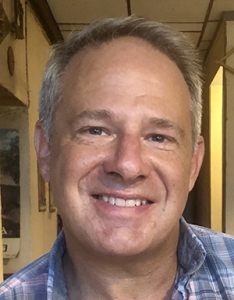Specifically Speaking with Chrissy McCutcheon Principal at Security By Design Inc. in Pacheco, Calif.

By Paul Ragusa
Updated Wed March 20, 2019

What's your title and role at the company?
I am a Principal and Senior Security Consultant at Security By Design Inc. (SBD). I provide direct client support in terms of physical security design and consulting, but I also participate with management of the firm, particularly in human relations and accounting.
What kinds of systems do you design/specify and what services does the company provide?
SBD specifies access control, alarm monitoring, video management, visitor management and voice communication systems in addition to the overall integration of multiple combinations of these systems and the control room systems where they are monitored. We are product independent and will specify the products that fulfill the needs and desires of the client. We work with our clients to get involved in projects early to incorporate CPTED (Crime Prevention Through Environmental Design) in the architectural design.
We provide a variety of services including planning, management services, studies, and systems design to help our clients understand where they are today, what their short terms goals should be, and how to plan for the future. SBD offers a unique service to our clients called ASSIST that we built to provide support documentation for the full security lifecycle from conception to sign-off and on through preventative maintenance.
What vertical markets does the company specialize in? Any interesting projects that you can mention?
Some of the vertical markets we work in are education, health care, government, airports, corporations, financial institutions and public housing complexes. Although we work for a variety of vertical markets, SBD targets multi-site and multi-national organizations where we assist our clients with developing standards that can be applied across their organization whether that is a few floors of an office building or dozens of sites world-wide.
One of our interesting projects was a local school district where we implemented district-wide access control, alarm, and video systems to cover all 56 sites instead of all disparate systems, which has been the standard approach in the past.
How did you get started in security and designing/specifying?
I am a second generation consultant with parents who are well known in the industry. I went into the Air Force Reserve partway through college and ended up working there full time after graduation. I became a security manager for physical, industrial, personnel, and information security overseeing those programs for over 1,200 personnel world-wide. I was on design teams for building out SCIFs and realized that I had ended up doing the same work in spite of taking a very different path. It was a logical next step to come back to SBD.
Can you talk about what new or emerging technologies you are seeing or specifying today?
The technology that I am seeing gain traction is using improved Machine Learning to make use of the Big Data that is being collected through the security systems. There are dashboards that dramatically reduce the time it takes to ensure systems are up and running. There are alerts that can trigger preventative action if a lock is drawing too much electricity or a server is getting too full. Security is able to support the Real Estate teams in determining usage of various facilities to determine how to build out future sites. There are new opportunities every day to support multiple business units with multi-purpose devices, which reduces cost and improves collaboration.
We have been assisting clients who want to implement CIV, which is the civilian version of the Federal Government's PIV program for physical and logical access. SBD has also been working with clients to implement mobile credentials.
What is your view on the industry moving forward?
As the technologies become more complex with additional features and capabilities, there will be a new support segment that will be required to properly configure the systems. Many integrators can install the systems during the buildout process, but highly trained and dedicated people will be required to optimize the systems. Within a unified platform, manufacturer pro support can be very beneficial, but when you are integrating multiple disparate systems, the techs will need to be certified and knowledgeable in each system to configure the tools effectively.
Comments